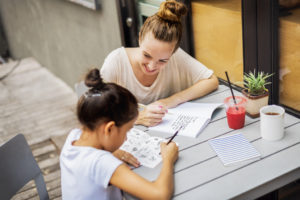A picture is worth a thousand words, and sometimes creativity can express what is difficult to convey in words. The beauty of a painting by a famous artist can spur many discussions on technique and inspiration. The Mona Lisa, for example, has led people to come up with their interpretation and meaning.
Art and creativity have always been fascinating and difficult for many people. But it remains as the universal form of self-expression, and people have always used it to express abstract thoughts and ideas. This extends to structures like buildings and houses too. An architect can come up with a creative staircase design, and an engineer can help make that a reality for a homeowner.
Being creative has no limits, and many people are finding ways to express themselves in different ways.
Creative Spaces
Creative spaces are now built for people to express themselves in different ways, whether it’s painting or dance. The spaces also allow for people to feel the positive effects of art. Organisers prepare programmes for drawing, painting, writing, and even poetry. This allows artists and tutors to run programmes that cater to varying skills and preferences. In New Zealand, creative spaces are being built in many hospitals, daycare centres, and community centres.
Art Therapy
On a wider scale, art has also known to help people in need of therapy and assistance. The Australian, New Zealand, and Asian Creative Arts Therapies Association (ANZATA) defines art therapy as psychotherapy involving different art mediums that improve a person’s overall well-being.
The focus of art therapy is on a person’s inner feelings and imagination. This means that the process of creating and finding meaning is more relevant. Art therapy focuses on a person’s world and emphasizes growth and insights through experience and resolving conflict.
The art therapist and client work together to create meaning out of it. The unique nature of art therapy gives people a connection between art and the self. This gives clients the opportunity to relay information better through the artwork; something that may not be achieved through talking.
Another positive aspect of art therapy is by engaging in art in their way; clients can express themselves better and without restrictions. The freedom of expression allows therapists to understand the client and make meaning out of their work; this results in providing appropriate treatment and help.
Voices Heard Through Art

People appreciate paintings and sculptures made by famous artists around the world, and they often find deeper meaning in these works, whether it is an appreciation of the beauty of the work or the skill of the artist. But to create art is something else, and many people often think it requires a genius to do so. But creativity can be expressed in many ways, whether it is through performance or craftsmanship.
For those who thought they are not creative, they might be genuinely surprised how creativity and art could come out from their interests, and how they could use it as a vehicle of expression.



















